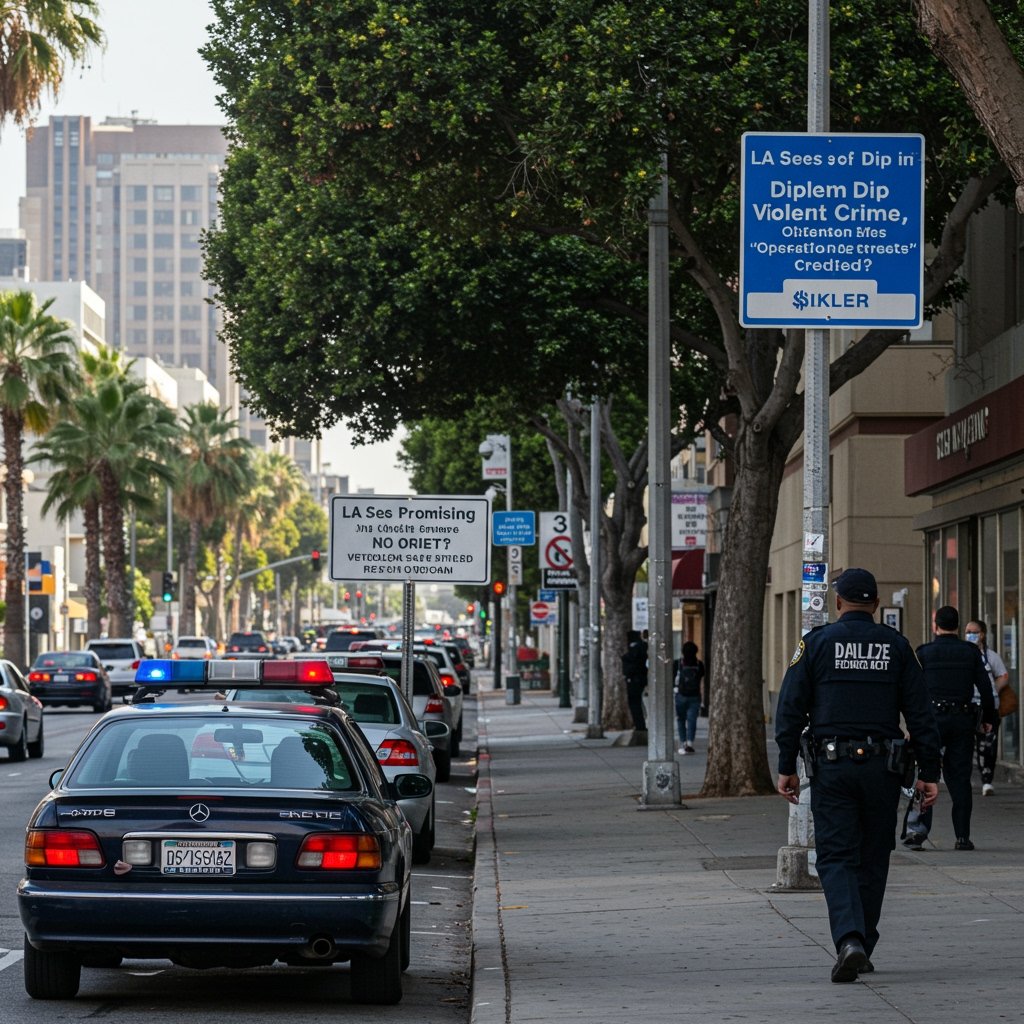Los Angeles Reports Initial Decline in Violent Crime Amidst “Operation Safe Streets” Expansion
LOS ANGELES, CA – City officials today announced the first quantitative indicators of impact from the expanded “Operation Safe Streets” initiative, a significant public safety program launched in late 2024. According to data presented by Los Angeles Mayor Karen Bass and LAPD Chief Michel Moore, the first quarter of 2025 saw a marginal, yet noteworthy, decrease in violent crime incidents across the city, specifically a 3.5% reduction compared to the corresponding period prior to the program’s full implementation.
“Operation Safe Streets” represents a multi-pronged approach to tackling persistent crime challenges in Los Angeles. Its expansion in late 2024 was a direct response to community concerns and a strategic effort to enhance safety in areas most affected by criminal activity. A core component of the expanded initiative involves a tangible increase in police presence within designated high-crime neighborhoods. These targeted zones include historically challenged areas such as Skid Row downtown, as well as specific parts of the San Fernando Valley, reflecting a citywide focus rather than solely concentrating resources in a single district.
Complementing the enhanced enforcement aspect is a significant investment in community outreach programs. Recognizing that sustainable public safety requires more than just law enforcement, these initiatives aim to build stronger relationships between residents and police, provide support services, and address root causes of crime. Funding for these crucial community outreach efforts is partly derived from City Measure A, a ballot initiative passed by Los Angeles voters in November 2024, underscoring public support for a comprehensive approach to safety.
Mayor Bass and Chief Moore presented these initial findings with a tone of cautious optimism. While the 3.5% drop in violent crime for the first quarter of 2025 is a positive signal, officials stressed that this represents preliminary data from the nascent stages of the expanded program. Sustained effort and continued monitoring will be necessary to determine the long-term effectiveness of “Operation Safe Streets”. The complexities of crime statistics mean that fluctuations can occur, and a single quarter’s data, while encouraging, does not constitute a definitive trend.
The announcement also acknowledged areas where challenges persist. Property crime, for instance, saw a slight increase during the same period, rising by 1.2%. This indicates the evolving nature of crime and the need for adaptable strategies. Officials noted that addressing property crimes, which often impact residents’ sense of security and economic well-being, remains a priority and will be subject to ongoing evaluation and tactical adjustments within the broader safety framework.
One promising operational metric highlighted by city leaders is the reduction in response times within the targeted neighborhoods under “Operation Safe Streets”. While specific data points were not detailed, the preliminary indication of faster response times suggests that the increased police presence is having a direct, positive impact on the ground, potentially deterring criminal activity or leading to quicker interventions when incidents do occur. Improved response times are a critical factor in both law enforcement effectiveness and community confidence.
The expansion of “Operation Safe Streets” follows extensive planning and resource allocation subsequent to the passage of City Measure A. This measure was designed to provide dedicated funding streams for public safety initiatives, including those that support both traditional policing and innovative community-based programs. The partial allocation of Measure A funds to the community outreach component of “Operation Safe Streets” signifies a deliberate strategy to integrate social support and community engagement into the core of the city’s crime reduction efforts.
Authorities emphasized that the success of “Operation Safe Streets” will ultimately be measured not just by statistical shifts but by the tangible improvements in safety perceived by residents in areas like Skid Row and parts of the San Fernando Valley. Community feedback and ongoing collaboration with local leaders and organizations will be vital in refining the program and ensuring its strategies are responsive to the specific needs of different neighborhoods.
While the 3.5% decrease in violent crime is an early result, it provides an initial validation for the strategic expansion of “Operation Safe Streets”. City officials plan to continue rigorous analysis of crime data, operational metrics like response times, and community impact assessments throughout 2025. The commitment remains focused on building upon these initial positive indicators and working towards a safer Los Angeles for all residents, leveraging both increased enforcement presence and vital community partnerships funded through mechanisms like City Measure A, enacted following its passage in November 2024 and subsequent implementation.
The slight increase in property crime to 1.2% serves as a reminder of the complex landscape of urban crime and the need for persistent, data-driven strategies that can adapt to different criminal patterns. Mayor Bass, Chief Moore, and the LAPD leadership remain dedicated to evaluating the program’s effectiveness, making necessary adjustments, and providing transparent updates to the public as “Operation Safe Streets” continues to unfold across the city.





